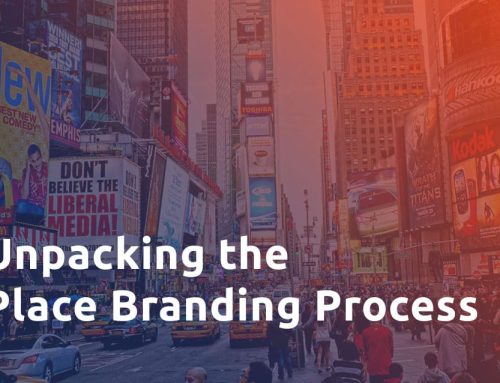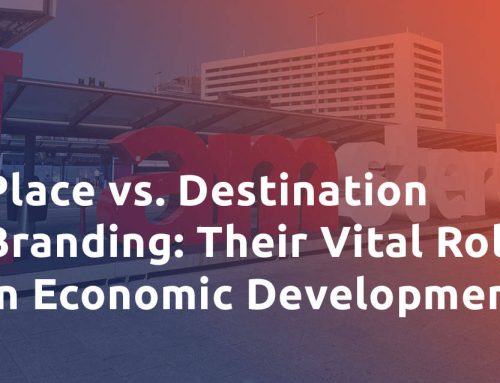LinkedIn, the world’s largest professional network on the internet, has become a powerful tool for professionals around the world. The platform is free, takes only minutes to sign up to, and enables you to network with individuals from all over the world. When you build a better network on LinkedIn it can provide new opportunities, allow recruiters to find you, and showcase your achievements to enhance your professional reputation.
Your LinkedIn network is your most valuable asset on the platform. It is made up of your 1st-degree, 2nd-degree, and 3rd-degree connections, as well as your followers and fellow members of your LinkedIn groups. To get the most out of the platform, you need to build a better LinkedIn network that benefits you and targets your needs.
Here are 10 Tips to help you build a better LinkedIn Network.
Do’s for building a better LinkedIn network
1. Make your profile stand out
Your profile is your personal brand on LinkedIn, it tells potential employers and connections everything they need to know about you. In order to build a better network your profile needs to attract the right audience.
As the first thing users see, your profile pictures make a significant impact on any opinions about you. Make sure the photo is up to date and looks like you, your face should be the focus! Utilize your headline to not only show what you do – but also who you are, make sure it reflects your professional brand and makes you stand out from others. In your summary, you can go more in-depth, and include a bit about yourself, your experience, and your top skills and passions. You can also include your future aspirations to let potential recruiters know what you are looking for.
Unlike a resume, your LinkedIn profile is not tailored for a specific job, so it should be an overview of your professional experience, career, education, and any other relevant information.
2. Send a personalized message to connection requests
A personalized message allows you to customize each request and explain why you are interested in adding the person to your network. Using this can help give context as to why they should accept your request.
When you’re connected with someone you know personally you can simply include how you know them – whether it be through current or past job, or just casually. If you recently met, you could reference where you met to provide a reminder of how they know you. If you don’t know the person you are sending an invitation to connect with, your message can include why you want to connect with them and why they should accept. It helps you show them that you are interested in connecting with them as an individual, not just as a means for reaching 500+ connections.
3. Post content
LinkedIn is designed around building professional relationships, and just sending a connection request is not enough. Your connections should feel like they know you. The best way to do this is through posting content for your network to see!
Posting regularly can help you build a stronger connection to your network. Your connections should know what you are doing so they are able to reach out with relevant opportunities. If you regularly post about professional events you are attending, new career paths and promotions, or the latest industry news, you’ll help establish yourself in your field.
Your connections can also engage with your content through liking, commenting, and sharing your posts. This will then broadcast your posts to their network and can help you find more beneficial connections.
4. Engage with your connections
You should be regularly checking your LinkedIn feed and engaging with the content your connections post. Just like how they can engage with your content through liking, commenting, or sharing your posts, you can do the same for them. The more you engage with their content, the stronger your relationship will be.
Users can see who engages with posts, by liking, commenting, and sharing you are creating more visibility for your profile. You are also showing potential connections that you care about your network and want to form meaningful professional relationships.
Engaging with your connections content will also create a reciprocity relationship. Users are more willing to engage with others that also engage with them.
5. Join a relevant group
LinkedIn groups provide an area for like-minded users to post and discuss specific topics with each other. Groups are a fantastic way to interact with people not in your network.
It can be difficult to build your network full of individuals in your industry or with similar interests – groups make this easy. Group members can share experiences, ask for guidance on problems or just discuss interesting topics with like-minded people. Joining and participating in groups allows you to become visible to more potential connections.
Here are some of the most popular Economic Development groups that might be of interest:
- Economic Development Leadership
- Economic Development 2.0
- FDI Tracker – Foreign Direct Investment & Economic Development
The connections that come from groups can often benefit you much more than other connections. Typically, groups are based around a specific industry or topic, everyone in the group is either an industry professional or passionate about the topic. This means the connections you make from them are more likely to have opportunities relevant to your goals and can also help you build a stronger professional reputation.
Don’ts for building a better LinkedIn network
1. Connect with everyone you see
People often get caught up in the appeal of having the 500+ connections next to their name and start connecting with anyone they see. This is not a beneficial way to build your network. The purpose of LinkedIn is to make meaningful connections – not the most connections. You should be connecting with people that are valuable to your network, this includes people with similar interests, in relevant industries, people you know personally, or people that might be able to offer you new opportunities.
Just connecting with everyone you see will flood your network with individuals that don’t care about building a meaningful relationship. Having non-relevant connections that flood your feed will also make it more difficult for you to engage with the connections that are relevant to you. Don’t let the appeal of having hundreds of connections outweigh the benefits of having fewer strong connections.
2. Spam connection requests
When a connection request is rejected, it can feel discouraging, and while it may seem appealing to resend the request until they accept, it will not usually work.
If someone rejects your request, they have a reason. They may feel that you would not be a valuable addition to their network, and this will not change after numerous connection attempts. The best thing to do is accept the rejection and move on.
If you truly feel that they made a mistake rejecting your connection request, you should wait for a few weeks before reaching out again. When you do reach out again send a personalized message explaining why you want to connect with them and why you would make a valuable addition to their network.
3. Turn off notifications
LinkedIn thrives on engagement. It is such a valuable tool for networking and should not be treated like a chore. You should be active and consistent in your engagement. The more you are willing to put in, the more you will get from it.
Turning off your notifications means that you could be missing new connections requests, messages, or relevant posts. LinkedIn also notifies you when one of your connection’s posts something exciting, and if you miss that notification, you will miss engaging with your connections and it will be more difficult for you to build meaningful relationships within your networks.
4. Leave connection requests waiting
When you receive a connection request it is because someone wants to be a part of your network and they think that you could have a mutually beneficial relationship. By leaving the request sitting for days it gives off the impression that they are unimportant to you.
While you do not have to accept the request the second you get the notification, doing it promptly you will show the person that you view them as valuable.
Even if you do not want to accept the invitation, do not leave it sitting there forever. LinkedIn is a professional networking site and there is nothing wrong with declining an invitation that is not relevant to your professional brand. This also ensures that other requests will not get lost in a sea of irrelevant invitations.
5. Post irrelevant content
Posting content is one of the most important things when building your LinkedIn network, however you want to ensure that the content you post is relevant and beneficial to your professional brand.
LinkedIn is not a social media platform for posting anything, it is meant to be for professional networking. As such, the content you share should reflect your professional life. Keep what you post related to your industry, professional interests and accomplishments.
When you share content that is relevant it helps establish credibility for your profile and professional brand. Ensure that the posts you are making and the content you are sharing will be interesting or useful to your network.







